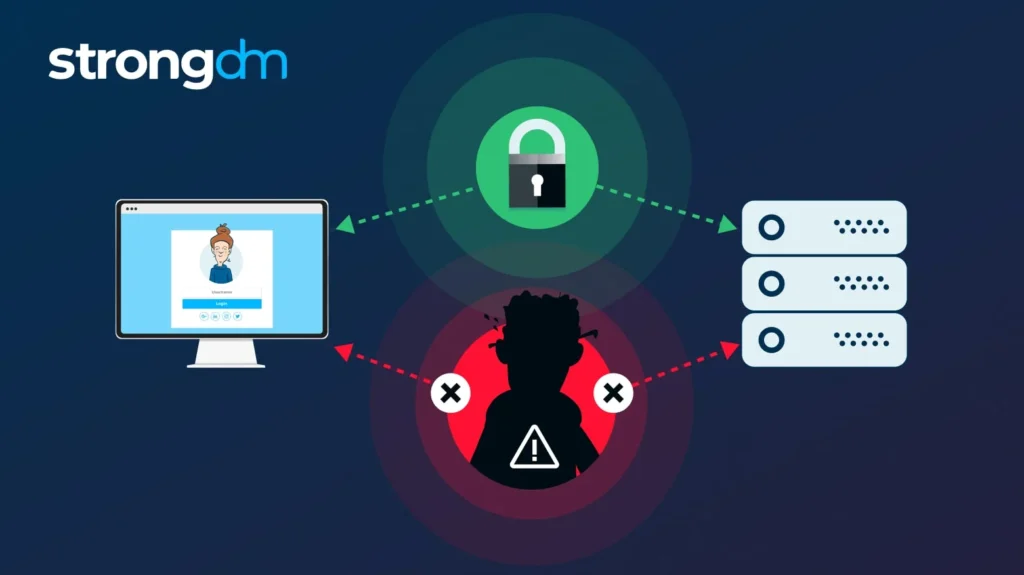Understanding Man-in-the-Middle (MITM) Attacks

Man-in-the-Middle (MITM) attacks are a prevalent and dangerous form of cyber threat where an attacker secretly intercepts and relays communications between two parties who believe they are directly communicating with each other. In essence, the attacker positions themselves between the sender and receiver, gaining access to the transmitted data without either party’s knowledge. The basic mechanics involve eavesdropping on data exchanges, which can subsequently be altered or stolen.
MITM attacks commonly occur in scenarios where data is transmitted over unsecured or poorly secured networks. Public Wi-Fi hotspots are particularly susceptible, as they often lack robust encryption protocols. Attackers can also exploit vulnerabilities in websites or applications to initiate these attacks. The data targeted typically includes sensitive information such as login credentials, credit card numbers, and personal identification details. The consequences of a successful MITM attack can be severe, ranging from identity theft and financial loss to unauthorized access to confidential business information.
There are several variations of MITM attacks, each employing different techniques to achieve similar malicious goals. HTTPS spoofing, for example, involves tricking users into believing they are connected to a secure website when, in reality, they are communicating with a malicious server. This allows attackers to capture sensitive information entered on the fake site. Wi-Fi eavesdropping takes advantage of unencrypted wireless networks to intercept data transmitted between devices and routers. Session hijacking, another form, occurs when an attacker takes control of a user’s session by stealing session cookies or tokens, granting them unauthorized access to the victim’s accounts.
Understanding the diverse methods of MITM attacks is crucial in developing effective mitigation strategies. Recognizing the variations and potential impacts helps in crafting comprehensive security measures to protect against these sophisticated cyber threats.
Identifying Vulnerabilities and Risks
Man-in-the-Middle (MITM) attacks exploit specific vulnerabilities and risks present in systems and networks. One of the most common weak points is unsecured Wi-Fi networks. Public Wi-Fi networks, often found in cafes, airports, and hotels, are particularly susceptible because they lack robust security protocols. Attackers can easily intercept data transmitted over these networks, gaining unauthorized access to sensitive information.
Outdated software is another significant risk factor. Software that is not regularly updated can harbor unpatched security flaws, which attackers can exploit. These vulnerabilities may exist in operating systems, browsers, or applications, making it crucial for organizations and individuals to maintain up-to-date software across all devices.
Poor encryption practices also contribute to the threat landscape. Encryption is the cornerstone of data security, ensuring that even if data is intercepted, it remains unreadable. However, weak or improperly implemented encryption can be easily broken, rendering it ineffective. Utilizing strong, industry-standard encryption methods is essential to safeguarding data against MITM attacks.
Social engineering tactics play a pivotal role in facilitating MITM attacks. Attackers often use deceptive techniques to manipulate individuals into divulging confidential information or performing actions that compromise security. For instance, phishing emails or fraudulent websites can trick users into entering their login credentials, which attackers can then use to intercept communications and data.
By identifying these vulnerabilities and risks, organizations and individuals can better understand where their systems might be at risk. Prioritizing the security of Wi-Fi networks, ensuring software is up-to-date, employing robust encryption methods, and educating users about social engineering tactics are critical steps in mitigating the threat of MITM attacks. Addressing these areas can significantly reduce the likelihood of falling victim to such attacks, thereby enhancing overall cybersecurity posture.
Implementing Technical Mitigation Strategies
Man-in-the-Middle (MITM) attacks present a significant threat to network security, necessitating robust technical mitigation strategies. One of the most effective methods to safeguard against these attacks is the implementation of strong encryption protocols, such as Transport Layer Security (TLS) and Secure Sockets Layer (SSL). These protocols ensure that data transmitted between clients and servers remains encrypted and secure from eavesdroppers.
Another crucial measure is the use of certificate pinning. This technique involves associating a host with its expected X.509 certificate or public key to prevent attackers from using fraudulent certificates to intercept communications. By enforcing certificate pinning, organizations can effectively reduce the risk of MITM attacks stemming from compromised certificate authorities.
Virtual Private Networks (VPNs) also play a vital role in securing communications, especially for remote workers and mobile devices. VPNs create a secure tunnel for data transmission, encrypting the traffic between the user and the network. This added layer of security is particularly beneficial when connecting to public Wi-Fi networks, which are often targeted by attackers.
Additionally, the deployment of Intrusion Detection Systems (IDS) and Intrusion Prevention Systems (IPS) can significantly enhance network security. IDS monitors network traffic for suspicious activities and potential threats, while IPS takes proactive measures to prevent identified threats from causing harm. Both systems are essential in identifying and mitigating MITM attacks in real-time.
Securing Wi-Fi networks is another crucial aspect of mitigating MITM attacks. Implementing strong encryption methods, such as WPA3, and regularly updating router firmware can help prevent unauthorized access. It is also advisable to disable WPS (Wi-Fi Protected Setup) and to use complex, unique passwords for network access.
Finally, securing endpoints is essential in the fight against MITM attacks. Ensuring that all devices have up-to-date security patches, utilizing antivirus software, and educating users about phishing and other social engineering attacks can significantly reduce the risk of endpoint compromise.
By effectively configuring and utilizing these tools and technologies, organizations can create a multi-layered defense against MITM attacks, ensuring the security and integrity of their communications and data.
Educating and Training Users
The efficacy of any cybersecurity strategy hinges significantly on the awareness and actions of its users. Educating and training users play a pivotal role in mitigating Man-in-the-Middle (MITM) attacks. By fostering a culture of awareness and vigilance, organizations can substantially reduce the risk of such incidents.
Firstly, it is crucial to raise awareness among employees and end-users about the inherent risks and signs of MITM attacks. Regularly scheduled training sessions can educate users on identifying suspicious activities. This includes recognizing unusual URL structures, unexpected prompts for credentials, and the subtle signs of phishing attempts. Teaching users to verify URLs, especially when accessing sensitive information or conducting financial transactions, is foundational in preventing MITM attacks.
Furthermore, users should be instructed on the dangers of using public Wi-Fi networks for sensitive transactions. Public Wi-Fi networks are often poorly secured, making them prime targets for MITM attacks. Encouraging the use of Virtual Private Networks (VPNs) can provide an additional layer of security, ensuring that data transmitted over these networks is encrypted and less susceptible to interception.
Implementing regular training sessions and simulations can keep users informed and vigilant. These sessions should be designed to simulate real-world MITM attack scenarios, helping users to understand and react appropriately. By continually updating the training material to reflect the latest threats and mitigation techniques, organizations can ensure that their users remain one step ahead of potential attackers.
A comprehensive approach to user education and training addresses both technical and human elements. By integrating these strategies, organizations can create a robust defense against MITM attacks. Emphasizing the importance of safe online behaviors, such as verifying URLs, recognizing phishing attempts, and avoiding public Wi-Fi for sensitive transactions, can significantly diminish the likelihood of successful MITM attacks. Regular training and simulations further solidify this knowledge, ensuring users are prepared to act decisively in the face of cyber threats.

